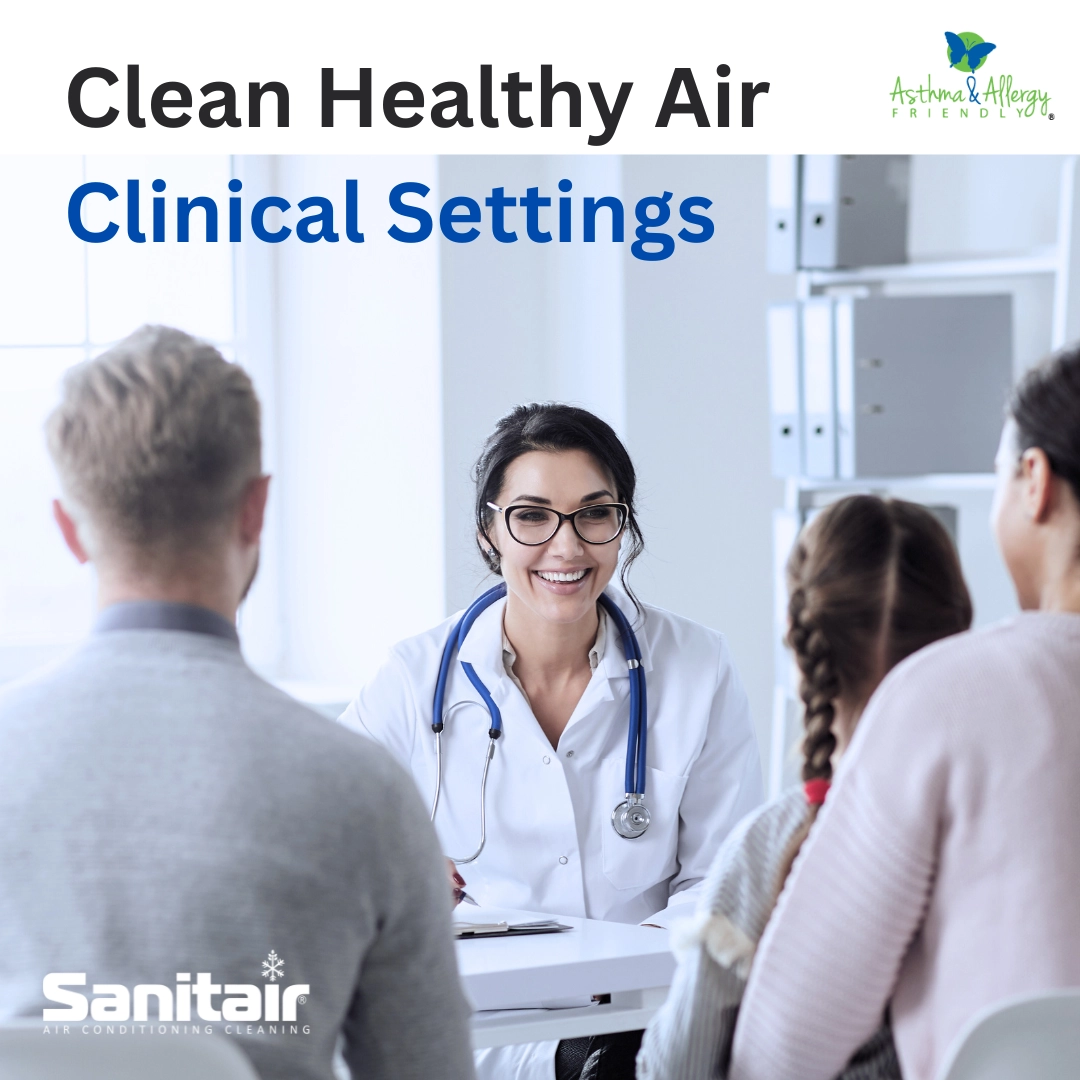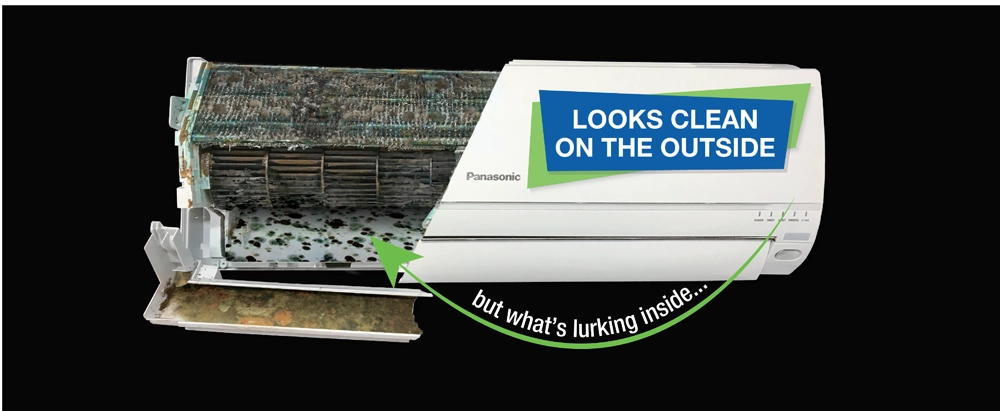
Maintaining Pristine Air Quality: The Vital Role of AC Cleaning and Sanitising in Clinical Settings
In clinical settings, maintaining a pristine environment is crucial for patient safety, staff well-being and overall operational efficiency. One often-overlooked aspect of maintaining this environment is the regular cleaning and sanitising of air conditioning (AC) systems. Given the critical role of AC units in regulating indoor air quality, humidity levels and temperature, it’s imperative to understand why and how these systems should be meticulously maintained in healthcare facilities.
Why Regular Cleaning and Sanitising Matter
1. Infection Control:
Hospitals and clinics are high-risk environments for the spread of infectious diseases. Pathogens such as bacteria, viruses and fungi can easily thrive in neglected AC systems. These microorganisms can be circulated throughout the facility, increasing the risk of infections among patients and healthcare workers. Regular sanitising of AC systems helps mitigate this risk by eliminating harmful pathogens before they can spread.
2. Improved Air Quality:
Clean air is essential in clinical settings to ensure the comfort and health of patients and staff. Dust, pollen, mould spores and other allergens can accumulate in air conditioning systems leading to poor indoor air quality. For patients with respiratory issues or compromised immune systems, this can be particularly dangerous. Routine cleaning ensures that the air remains clean and free of potential allergens and irritants.
3. Efficiency and Longevity of Equipment:
AC units that are clogged with dirt and debris have to work harder to maintain the desired temperature, leading to increased energy consumption and higher operational costs. Over time, this strain can also reduce the lifespan of the equipment, leading to more frequent replacements and repairs. Regular maintenance helps keep the system running efficiently and extends its operational life.
Best Practices for Cleaning and Sanitising AC Systems
1. Establish a Regular Maintenance Schedule:
Create a detailed maintenance plan that includes routine inspections, cleaning and sanitising of all AC components. Depending on the facility's size and patient load, this might need to be done quarterly, monthly or even more frequently.
2. Use Appropriate Cleaning Products:
Ensure that the cleaning agents used are hospital-grade disinfectants approved for use in healthcare settings and for the safe removal of mould contamination. These should be effective against a broad spectrum of pathogens and safe for the AC components and room occupants.
3. Clean and/or Replace Filters Regularly:
Filters are the first line of defense against airborne contaminants. Regularly cleaning and replacing filters ensures they function effectively. High-efficiency particulate air (HEPA) filters are particularly recommended for clinical settings due to their superior ability to trap microscopic particles.
4. Clean Coils and Drains:
Evaporator and condenser coils can accumulate dust and biofilms that impede airflow and heat exchange. Regular cleaning of these components is necessary to maintain efficiency. Similarly, keeping drains clear prevents water accumulation, which can lead to mould growth and water damage.
5. Inspect Ductwork:
Ducts can harbour dust, mould and other contaminants. Regular inspection and cleaning of ductwork help ensure that the air distributed throughout the facility is clean and safe. This might involve professional duct cleaning services for thorough sanitisation.
6. Monitor Humidity Levels:
Air Conditioning systems play a crucial role in controlling indoor humidity. Maintaining appropriate humidity levels (typically between 40-60%) can prevent mould growth and inhibit the spread of airborne pathogens. Use dehumidifiers if necessary and regularly check humidity levels.

There are several Australian Acts and Standards that apply to indoor air quality in clinical settings. Ensuring compliance with these regulations is crucial for maintaining a safe and healthy environment in healthcare facilities. Here are some key standards and guidelines:
Australian Standards and Guidelines for Indoor Air Quality in Clinical Settings
1. National Construction Code (NCC):
- The NCC, which includes the Building Code of Australia (BCA), sets out the minimum necessary requirements for safety, health, amenity and sustainability in the design and construction of new buildings, including healthcare facilities. It includes provisions for ventilation and air conditioning systems.
2. AS 1668.2-2012: The use of ventilation and air conditioning in buildings - Mechanical ventilation in buildings:
- This standard specifies the requirements for the design, installation and commissioning of mechanical ventilation and air conditioning systems to ensure acceptable indoor air quality and thermal comfort.
3. AS 3666.1-2011: Air-handling and water systems of buildings - Microbial control - Design, installation and commissioning:
- This standard outlines the design, installation and commissioning requirements for air-handling and water systems to minimise the growth and transmission of microorganisms.
4. AS 3666.2-2011: Air-handling and water systems of buildings - Microbial control - Operation and maintenance:
- This standard provides guidelines for the operation and maintenance of air-handling and water systems to control microbial growth and ensure the safe operation of these systems in buildings, including healthcare facilities.
5. The Australian Guidelines for the Prevention and Control of Infection in Healthcare (2019):
- Developed by the National Health and Medical Research Council (NHMRC) and the Australian Commission on Safety and Quality in Health Care, these guidelines include recommendations for maintaining air quality to prevent the spread of infections in healthcare settings.
6. Work Health and Safety Act 2011 (WHS Act):
- The WHS Act requires employers to provide a safe working environment, which includes maintaining acceptable air quality levels to protect healthcare workers and patients.
7. State-Specific Regulations and Guidelines:
- Various states and territories in Australia may have additional regulations and guidelines that apply to indoor air quality in healthcare facilities. For instance, New South Wales Health provides specific guidelines for infection control and air quality management in hospitals and other healthcare settings.
Conclusion
Maintaining high indoor air quality in clinical settings is a critical aspect of healthcare facility management. Compliance with these standards and guidelines helps ensure the health and safety of patients, staff and visitors by minimiaing the risk of airborne infections and other air quality-related issues. Regularly reviewing and adhering to these standards is essential for healthcare facilities to provide a safe and effective care environment.
Call Sanitair – Qualified HVAC Hygienists and IICRC certified mould remediation experts with the expertise to eliminate serious mould risks within your HVAC system. For more information on our mould remediation services or to schedule an HVAC health check, contact our team today – 1800 130 168 Australia Wide and nearly two decades in the HVAC Hygiene industry.

